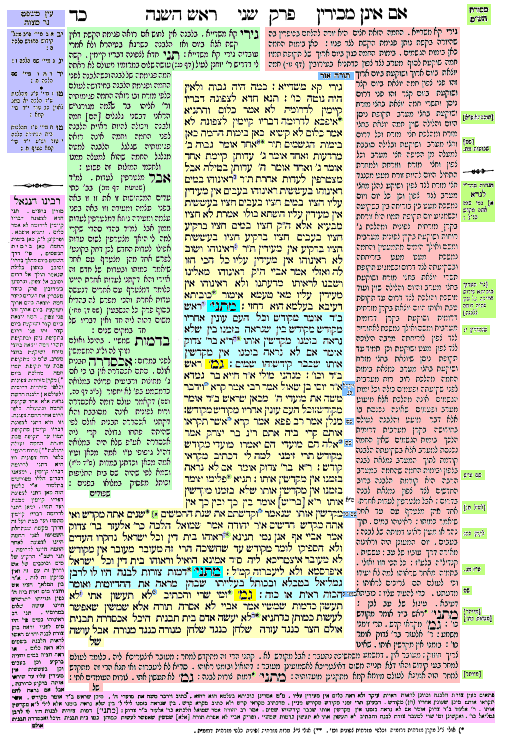The Talmud and RapGenius
I've been thinking about annotation and RapGenius, the startup that successfully took advantage of this trend. But it is not until recently that I realized that the most interesting example of annotation has been lying there, in front of me, my entire life.
The Talmud, or body of Jewish law, contains the most fascinating example of annotation, annotation on annotation, and annotation on annotation on annotation.
The chain of commentary-on-commentary in the Talmud traverses eras and languages. For those interested in annotation, the Talmud is an incredible source of awe and inspiration.
For those who are not familiar with this topic, the Talmud is the body of Jewish civil law. It is comprised of the Mishnah and the Guemarah. The Mishnah represents the oral tradition of the Torah, and the Guemarah consists of discussions about those laws.
Here's what a typical page of the Guemarah looks like:

- The text in blue is the Mishnah, written in 'Mishnaic Hebrew' circa 189 CE.
- The text in yellow is the Guemarah, annotations on the Mishnah. It was written in Aramaic in the 4th-6th centuries CE.
- The text in purple is called “Rashi” and was written several centuries later. It explains and clarifies ambiguities from the Guemarah. Though written in Hebrew, it often uses Latin and Medieval French words to designate objects that didn't have a proper Hebrew translation.
- The text in red is Tosafos, most of which were written in France in the middle ages. They represent further commentary on the Mishnah and Rashi.
I wonder if modern examples of annotation will ever reach the same level of complexity, depth and sophistication that is present in the Talmud.